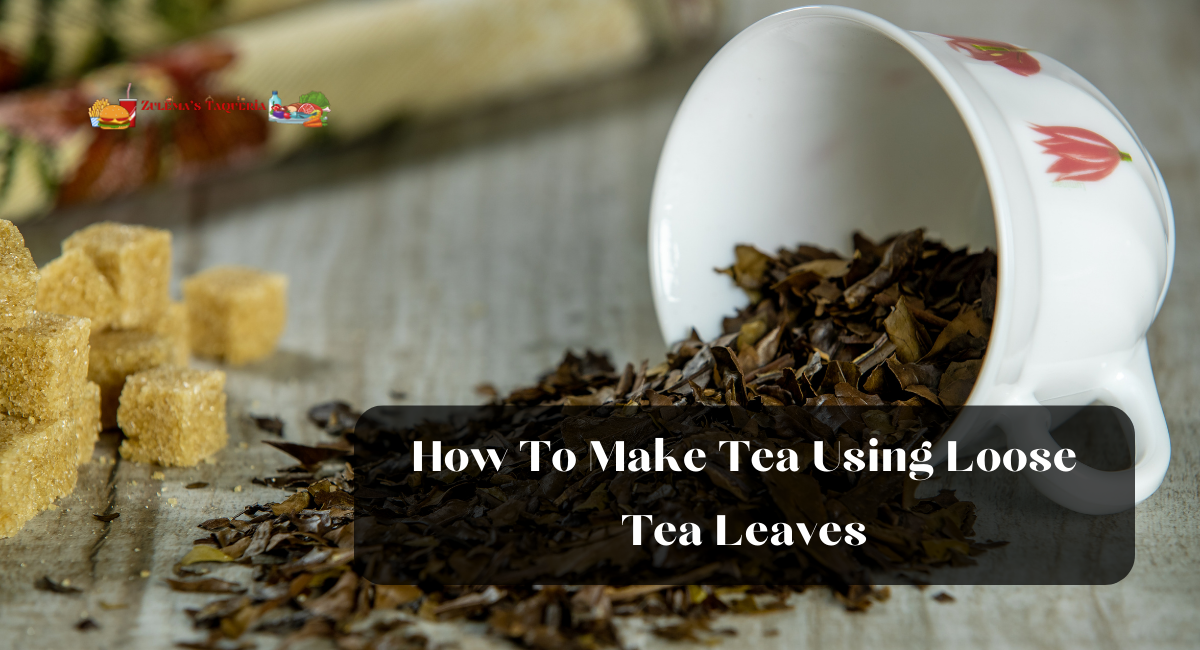Making tea from scattered leaves at home is relatively easy. Tea preparation requires only tea leaves, boiling water, and a container for brewing. Whether you’re new to loose-leaf tea or need a refresher, this article will discuss how to make tea using loose tea leaves.
Ingredients And Materials
- Tea Leaves: Select the high-quality loose tea leaves of your choosing. Standard options include black, green, white, oolong, and medicinal teas. The variety of tea will determine the flavor and aroma.
- Fresh, Cold Water: Use fresh, cold water for the greatest results. Avoid using stagnant water because it may have a stale flavor. Ideal water is filtered or spring water.
- Tea Infuser, Teapot, or Tea Strainer: You will need a means to steep the loose tea leaves, such as a tea infuser, teapot, or tea strainer. A tea infuser (a small container with microscopic holes for the leaves), a teapot with an integrated infuser, and a tea strainer are all available options.
- Water Boiling Kettle or Pot: You will need a kettle or pot to boil water. A kettle or a saucepan with a stovetop work well. If using a microwave, ensure the container is microwave-safe.
- Teacup or Mug: Select a clean teacup or mug from which you appreciate drinking. A larger cup permits greater control over the tea’s intensity.
- Optional Accessories: Use a timer to keep track of how long the tea is steeping, a thermometer to measure the water temperature exactly, and a tea cozy to keep the teapot warm while the tea is steeping.
How To Make Tea Using Loose Tea Leaves
Instructions
Boiling Water
First, bring the water to a simmer. The water temperature is essential for a perfect cup of tea, so follow these guidelines:
- Black Tea: Water that is 100°C or 212°F and boiling.
- Green tea: Green tea needs water that is between 80 and 85 degrees Celsius (or 175 and 185 degrees Fahrenheit).
- White Tea: Cooler water, between 175 and 185 degrees Fahrenheit (80 and 85 degrees Celsius).
- Oolong Tea: Near-boiling water, between 190 and 200 degrees Fahrenheit (88 and 93 degrees Celsius).
- Herbal Tea: Water at a boil (212°F or 100°C).
- Utilize a thermometer to ensure the tea is brewed at the ideal temperature.
2. Preheating The Teapot Or Cup
A small quantity of hot water should be poured into your teapot or teacup. Stir the mixture to reheat the vessel. Throw away this water. Preheating your teapot or cup helps preserve the temperature and flavor of the tea.
3. Measuring Tea Leaves
The quantity of tea leaves depends on your personal preference and the variety of tea. Use between 1 and 2 teaspoons of loose tea leaves per 8 ounces (240 milliliters) of water. Adjust this quantity to your liking.
4. Add Tea Leaves To The Teapot Or Infuser:
Place the measured tea leaves in your preferred tea infuser or, if your teapot has an integrated infuser, directly into the teapot. Ensure that the tea leaves are uniformly distributed.
5. Pour Hot Water Over The Tea Leaves
Carefully pour the warm water over the tea leaves, making sure they are completely saturated. Hot water should be used to soak tea leaves. Steeping times differ according on the type of tea.
- Black Tea: 3-5 minutes
- Green Tea: 1-3 minutes
- White Tea: 2-5 minutes
- Oolong Tea: 3-5 minutes
- Herbal Tea: 5-7 minutes
Using a timer can ensure that the tea is steeped for the proper amount of time. Oversteeping can result in bitterness, so watch the timer.
6. Remove The Tea Leaves
When the tea has soaked for the right amount of time, the tea leaves should be taken out so that the tea doesn’t get too much water. If you used an infuser, take it out of the teapot or cup. If you put the tea leaves directly into the pot, pour the tea through a strainer and leave the leaves behind.
7. Serve With Pleasure
The freshly brewed tea should be poured into a spotless teacup or mug. Add sweeteners such as sugar or honey, or enhance the flavor with milk or lemon, if desired. Stir to combine, then savor the aroma and taste of your loose-leaf tea.
Tea Preparation Chart
| Amount of Tea Leaves | Water Temperature | Steep Time | |
| Black | 1 level tsp. per 6oz | full boil (212°) | 3-5 minutes |
| Green | 1 level tsp. per 6oz | steaming briskly (175-180°) | 1-2 minutes |
| White | 2 level tsp. per 6oz | steaming briskly (175-180°) | 2-3 minutes |
| Oolong | 1 level tsp. per 6oz | almost boiling (195°) | 2-3 minutes |
| Pu-erh | 1 level tsp. per 6oz | full boil (212°) | 5 minutes |
| Purple | 1 level tsp. per 6oz | steaming briskly (175-180°) | 3 minutes |
| Mate | 1 level tsp. per 6oz | steaming (150-160°) | 3-5 minutes |
| Herbal | 1 level tsp. per 6oz | full boil (212°) | 5-10 minutes |
| Rooibos | 1 level tsp. per 6oz | full boil (212°) | 5-10 minutes |
Tips
Here are some additional suggestions for making the finest tea from loose tea leaves:
- Utilize Fresh Water: Always begin with cool, fresh water. Water that has sat or undergone multiple heating cycles may impart a bland flavor to your tea, diminishing its quality.
- Measure Accurately: Invest in a kitchen scale or use measuring tools to measure your loose tea leaves precisely. A consistent amount of tea is essential for achieving the intended flavor.
- Select High-Quality Tea: The quality of your tea leaves significantly affects the flavor. Choose loose tea leaves from reputable brands or specialty tea stores for optimal results.
- Control Water Temperature: Pay strict attention to the temperature of the water. Utilize a thermometer to ensure you reach the ideal temperature range for your particular tea type. Too-hot water can scald delicate leaves, while too-cold water may not extract enough flavor.
- Steep Time Matters: Timing is Crucial for Steeping Tea Timing is crucial for steeping tea. Set a timer to prevent overstepping, resulting in an unpleasant flavor. Experiment with different steeping times to determine your preferred concentration.
- Experiment with Ratios: The ratio of tea to water is a matter of taste. Adjust the amount of tea leaves used to create stronger or weaker tea. More leaves produce a more potent beverage, whereas fewer leaves produce a softer flavor.
- Use a Timer: A timer can help ensure consistency in your fermentation process. It is beneficial when experimenting with various teas and steeping times.
- Reinfuse Tea Leaves: Some high-quality loose tea leaves are capable of being infused multiple times. Try steeping the same leaves again after the initial infusion to investigate additional flavor profiles.
- Store Tea Properly: Tea should be stored in an airtight container away from sources of heat, light, moisture, and intense odors. This helps preserve their flavor and freshness.
Remember that these guidelines are merely a starting point; you can tailor the brewing process to your preferences. Feel free to experiment with tea-to-water ratios, water temperatures, and steeping periods to find the optimal tea brew. Enjoy your voyage in making tea!
Thanks for reading.










